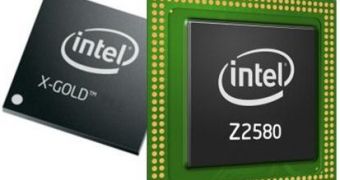Intel’s Medfield low-power CPU can surely be considered a success as this is Intel’s first foray into the smartphone market and despite the legacy overhead, the platform actually managed to keep up with last year’s competition.
All that aside, Medfield has the manufacturing process advantage, being produced in the company’s own 32nm process while the other ARM chips in the competition are made in 40nm technology at TSMC.
Despite the manufacturing advantage, Medfield didn't excel in performance nor in power consumption.
The thing is that the complexity of having to deal with the x86 overhead, the increased power consumption (greater than 40nm chips) and the lack of a clear performance lead made Medfield unappealing to smartphone makers.
Most ARM performance leaders have now been moved to 28nm technology while the architecture itself has been greatly improved.
ARM’s Cortex A15 core is a very good example of improvement as the single-core performance has almost doubled in some cases and most industry insiders know that Intel’s Atom will not be able to achieve something similar in the following couple of years.
Merrill Lynch’s analyst, Mr. Vivek Arya reportedly believes that Intel’s technological manufacturing lead over TSMC and Samsung will suddenly transform its Atom CPUs into performance and power efficiency super starts.
"Next-gen chip manufacturing has become a 3-horse race between Intel, TSMC and Samsung, with Intel holding a 1 to 4 year lead, in our view. As we saw in 1H12, foundries were unable to ramp 28nm capacity, leading to product delays. Rising costs/ complexity (tri-gate) could further widen this gap. We believe this could enable Intel to gain a foothold (vs. zero today) in mobile over the next 2 years, as smartphone/tablet vendors look to Intel as a second or even primary source," said Mr. Arya.
We’d beg to differ. Moving to 22nm and adding a PowerVR SGX 544MP2 dual-core iGPU will certainly make the next-generation Intel smartphone chip have a much bigger die than a simple 22nm Medfield.
Intel will get some performance improvements and maybe some power consumption reduction too, but would that make it better than Qualcomm’s APQ8064 or Nvidia’s Tegra 4?
We have serious doubts that smartphone makers will suddenly give up ARM CPUs and see Intel as their primary source of mobile processors.
In our opinion, Intel's 22nm mobile chips will have decent performance and power consumption, but they will keep being inferior to ARM's performance leaders and this will definitely not make them a "primary source" of mobile processors for the device manufacturers.

 14 DAY TRIAL //
14 DAY TRIAL //